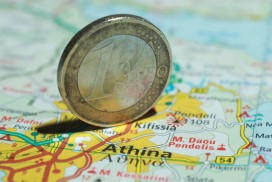http://on.ft.com/ntHHly
http://on.ft.com/ntHHly
Please respect FT.com's ts&cs and copyright policy which allow you to: share links; copy content for personal use; & redistribute limited extracts. Email ftsales.support@ft.com to buy additional rights or use this link to reference the article -http://blogs.ft.com/brusselsblog/2011/07/understanding-greeces-bail-out-wheres-e172bn/#ixzz1T8cXRxHa
Understanding Greece’s bail-out: Where’s €172bn?
 Like most people who have been following the Greek debt crisis closely, we’ve been spending much of the last few days drilling down to figure out just what eurozone leaders agreed to Thursday night, since even market participants remain confused about certain elements of the deal.
Like most people who have been following the Greek debt crisis closely, we’ve been spending much of the last few days drilling down to figure out just what eurozone leaders agreed to Thursday night, since even market participants remain confused about certain elements of the deal.
For Brussels Blog, the key question was always the most straight forward one: how big is the hole, and how are you going to fill it? We found out how big the Greek hole was earlier this month, when the European Commission released a report that showed the gap in Greek financing between now and mid-2014 – a whopping €172bn.
But just how they are going to fill that hole has not been publicly acknowledged amidst the conflicting accounts of the plan’s details that emerged in the days since the summit ended. Thanks to a previously undisclosed document obtained by the Brussels Blog – and a little help from a big EU economic brain – we seem to have figured it out.
The most obvious pieces are the old fashioned loans from the EU and the International Monetary Fund, which is the normal way the last three bail-outs have been funded. There’s €57bn left in the old Greek bail-out and €34bn of those normal loans in the new one, for a total of €91bn.
So where does the rest come from? First there is Greece’s privatisation programme, which is supposed to raise €28bn in the next three years – though critics are sceptical Athens will be able to raise that amount.
The remaining €54bn comes from the so-called “private sector involvement” – the complicated menu of roll-overs and swaps being offered to private bondholders. If the programme hits its target, €54bn of bonds that were supposed to come due in the next three years will be traded in for new bonds that won’t need to be paid out for 30 years.
Add those four elements together and you get €173bn (blame rounding error for not getting us to €172bn).
One interesting note in what was not included: The €20bn bond buyback programme. This has been much touted by European leaders as the first serious effort to actually pare Greece’s massive debt load – rather than just paying off loans as they come due – since purchasing bonds at cut rates on the open markets allows Greece to retire the debt an estimated 61 per cent of its face value (about where Greek bonds are now trading).
According to the EU brain we talked to, there is just too much uncertainty around the bond buyback plan to count it in the financing programme, since it’s unclear which bonds might be bought and how many will be available for purchase once the roll-overs and swaps are completed.
Stay tuned. We’ll be bringing you more of these detailed explanations as we unearth them.

Aucun commentaire:
Enregistrer un commentaire